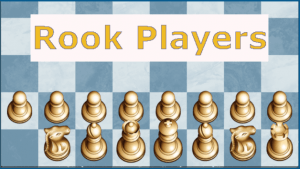
Mr. Bone
Mr. Bone
(Aug. 31, 1810 - Dec. 14, 1874)
William Bone, along with the Rev. Horatio Bolton, is considered to have been one of the two best early English chess problemists. John Augustus Miles, a problemist (who knew them both and studied the art from Bone himself) and publisher of chess problem compilations, referred to them as "Ancient Masters" because their styles, though not entirely similar, are of a classical, even primative, sort. Both problemists were fond of extremely long direct mates and mates with special requirements. Bolton, however, developed into a more revolutionary and forward-looking composer while Bone remained true to his style.

As can be seen, Bone doesn't seem to have been quite equal with the best players of his day, but was a decent player nonetheless. In his 1850 book, "Chess and Chess-players" George Walker listed contmporary players who were considered fine musicians as well as players who were capable of playing sans voir. William Bone (and F. L. Slous) made both lists. Bone, who learned to play chess at age 14, was also considered an excellent whist player. Although he originally studied law, he turned to painting and chess composition. His problems were published in collections such as Alexandre's "Beauties of Chess" and Miles' "Chess Gems," as well as in periodicals such as "The Philidorian," "Le Palamède" and "The Chess Player’s Chronicle." George Walker wrote a chess short story called Vincenzio the Venetian for which Bone supplied four problems.
Bone’s regular problems (direct mates in from three to twenty moves) are for the most part founded upon the poetic principle,
“Out of this nettle danger we pluck the flower, safety.”
Hence the Black forces are usually arrayed in overwhelming numbers and threaten such instant destruction as can only be averted by an immediate onslaught and a series of brilliant but forced sacrifices. Problems of this class differ as widely from those now in vogue as the reduction by escalade of a carelessly guarded citadel does from the silent, patient, underground operation of sappers and miners against an otherwise impregnable fortress.
Stratagems of the old school, all check and sacrifice, are even now deemed by some Chess players to be more game-like than compositions of our own day. We think, however, that the fine waiting moves by which a Philidor or a Morphy has often led up—not perhaps to mate but to that effectual substitute i.e. “ Black resigns "—are much more nearly parallelled by the four and five movers of our greatest living composers wherein every step is an ambush, than by the longest series of open attacks that ever was devised in times gone by.
The practice so prevalent in Bone’s time of looking upon every direct problem as merely the brilliant sequel to some imaginary game led, perhaps naturally, to the introduction of superfluous pieces and pawns with a view of simulating as closely as possible, positions that might be deemed likely to have occurred in real play. Such being the fashion in the old regime, student’s of Bone’s problems must not look for anything like the economy of force now practised by composers in general. On the other hand the great strength of Black’s array simplifies the plan of attack to such a degree that we have found such problems (in from ten to twenty moves) far easier to solve than, let us say for example, certain three and four movers in recent numbers of the H. C. M. (i.e. the Huddersfield College Magazine).
Benjamin Glover Laws was somewhat less tolerant when he wrote in "The Two-move Chess Problem" :
That they were for their time paragons of ingenuity cannot be denied, but owing to the tedious length of the solutions, which were sometimes absurdly burdened with restrictions, and the ponderous nature of the construction, problem admirers were not many. These composers appear to have considered it in good form to give the defence a marked superiority in force, totally unconscious of the principles of economy as now recognised ; and the attack was conducted through a long series of checks and bold sacrifices to a termination resembling more an endgame than a modem problem.

But some of his problems were less tedious and less absurd.
White to mate with the Pawn at f4 in eight moves, checking with the others at the 6th and 7th.
White to mate in 6

from "The Philidorian"

The author’s proposed solution admits of no such reduction of force. Our own, therefore, necessarily strike out other paths, yet we trust it will be found that the real gist of Bone’s idea remains intact in both cases."






